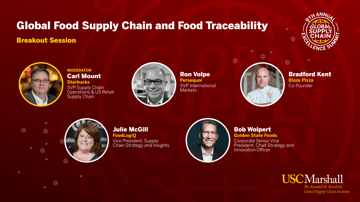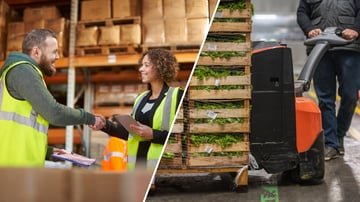Containing the fallout from a food-related quality issue is never simple. It requires an all-hands-on-deck approach from several departments including legal, marketing, and finance in addition to food safety and supply chain members. It might make the news for a day or for a lot longer, but always requires a strong marketing campaign to minimize the reputational damage.
Because social media has completely transformed branding, a single incident of food-borne illness can go viral. It can keep the incident at the forefront of consumer thought for weeks – and the spread of information about quality issues isn’t limited to incidents that make the news.
Social media users can share the details of a bad experience anytime, anywhere, thanks to mobile technology.
These changes make supply chain management and quality control critical, and every company must have a rapid response plan ready if the need for a recall is identified.
Fortunately, enhanced food traceability software offers advanced tools to trace non-conforming food products back to their source quickly, simplifying incident management and reducing the risk that food-borne illness will spread.
Features of Advanced Food Safety Technology Solutions
Many traditional food tracing processes promote themselves as “farm-to-fork” supply chain management solutions, but upon closer examination, it is clear that there are major gaps:
- Countries around the world regulate food production differently.
- It is quite common for transporters and distributors to co-mingle product.
- Failure to maintain records electronically adds to the disorder.
- Tracing food sources can require obtaining and deciphering written documents that are frequently incomplete.
Enhanced traceability systems rely on electronic record-keeping that offers true farm-to-fork tracking:
- Utilize a global language through the use of GS1 Standards, so all parties can manage and consume data at any point in the supply chain.
- Every trading partner - regardless of the country of origin - can identify their locations through the use of Global Location Numbers (GLN).
- Every product also gets a globally unique identifier such as a Global Trade Item Number (GTIN).
- Product is labeled with barcodes; pallets and cases are scanned along the supply chain (very much like postal and package delivery services).
- Records are centrally housed within the technology.
With enhanced traceability technology, ingredients can be traced back to their point of origin in moments. This feature is especially important if there is a situation in which quality is compromised. Advanced tools make it possible to initiate an investigation, notify suppliers, and locate related product immediately – which means better response times and reduced risk.
Consumers Expectations and Food Tracing Technology
Focus on the source of food is increasing, as movements to eat locally, eat sustainably, and eat organically expand. Mainstream consumers want to know where their food comes from and how it is grown.
Restaurants and retailers are meeting this demand with greater transparency, which has resulted in a need to reevaluate supply chain decisions. Food retailers make a commitment to their customers when advertising organic ingredients or identifying where an item was produced. A single slip-up can ruin a restaurant’s reputation – permanently.
A robust food safety technology platform makes it easier to manage suppliers and their audits, documents and certificates, improving the ability to make product claims with confidence.
Food Safety Technology Trends
Innovators are working on solutions for outstanding food tracing issues. Industry leaders are fine-tuning technology that can overcome the difficulties of inconsistent terminology, numbering systems, and type of data collected by each individual supplier.
The future of food traceability promises an increase in information at every step of the supply chain, allowing food businesses to identify potential hazards and mitigate risk of compromised product. As companies and consumers gain more visibility into the source of their food, greater accountability will be a natural result. That means safer food for everyone.
Other posts you might be interested in
View All Posts
Trustwell News
4 min read
| October 22, 2021
FoodLogiQ Talks Traceability at the Global Supply Chain Excellence Summit
Read More
Food Industry
17 min read
| November 13, 2025
Top Takeaways from reCONNECT 2025: Building a Smarter, Safer Food Industry
Read More
Food Industry
16 min read
| December 8, 2023


